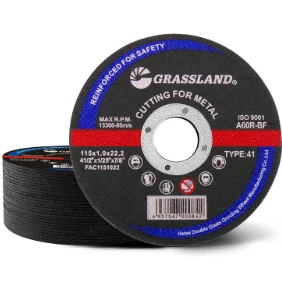

For specialized applications, Diamond and Cubic Boron Nitride (CBN) grinding wheels offer unparalleled performance. Diamond, the hardest known material, is the prime choice for grinding hard, brittle substances such as stone, glass, and advanced ceramics. Its exceptional hardness ensures precise cutting and unmatched wear resistance. However, using diamond wheels on ferrous metals is not advisable due to chemical reactions that can degrade the wheel. CBN wheels, while slightly less hard than diamond, excel in grinding ferrous materials. They are preferred for their ability to maintain sharpness and shape integrity, promoting high efficiency and finish quality when machining hardened steels and superalloys. CBN's heat resistance and thermal conductivity reduce the risk of thermal damage to the workpiece, paving the way for cleaner, faster operations. Each grinding wheel material has its unique attributes and applications, underscoring the importance of aligning wheel choice with specific material properties, workload, and desired finishes. By investing in the proper abrasive technology, manufacturers can enhance productivity, precision, and profitability in their machining processes. The intricate balance of factors such as hardness, toughness, and thermal properties must be weighed carefully. Leveraging the expertise of material science and an understanding of application requirements can lead to optimal grinding outcomes. This knowledge translates to better resource allocation, improved product quality, and a competitive edge in the manufacturing sector.
Post time:Jan - 13 - 2025

















